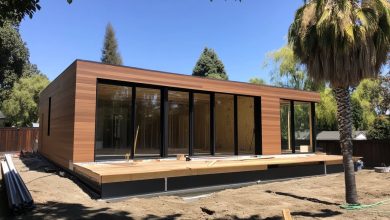Understanding Zoning R1: A Comprehensive Guide to Residential Zoning

Introduction to Zoning R1
Zoning R1 refers to a specific category of zoning regulations that govern the development and use of land for residential purposes. It is one of the most common types of zoning designations used by municipalities to regulate land use within their jurisdictions.
What is Zoning R1?
Definition: Zoning R1, also known as Residential Single-Family Zoning, is a zoning classification that designates areas for single-family residential use. Under zoning R1, properties are typically restricted to the construction of detached single-family homes.
Purpose: The primary purpose of zoning R1 is to establish and maintain neighborhoods consisting primarily of single-family dwellings. These zoning regulations aim to preserve the character of residential areas, promote housing stability, and provide adequate space and amenities for residents.
Characteristics of Zoning R1
Single-Family Homes: Zoning R1 typically permits the construction of single-family homes on individual lots. These homes are designed to accommodate one household and are not intended for multi-family or commercial use.
Minimum Lot Sizes: Zoning R1 often establishes minimum lot sizes for properties within the designated area. These minimum lot size requirements help maintain adequate spacing between homes, prevent overcrowding, and preserve neighborhood aesthetics.
Setback Requirements: Setback requirements dictate the distance between a structure and the property line. Zoning R1 typically imposes setback regulations for the front, side, and rear yards of residential properties. These setback requirements ensure adequate space between buildings and property boundaries, promoting safety and privacy.
Height Restrictions: Zoning R1 may also include restrictions on the height of residential structures. These height limitations prevent the construction of excessively tall buildings that could overshadow neighboring properties or detract from the character of the neighborhood.
Purpose and Benefits of Zoning R1
Preservation of Neighborhood Character: Zoning R1 helps preserve the character of residential neighborhoods by limiting the types of development allowed within the area. By promoting single-family homes and prohibiting commercial or industrial activities, zoning R1 contributes to the creation of cohesive and stable communities.
Promotion of Housing Stability: Zoning R1 regulations provide certainty and stability for homeowners by establishing clear expectations for the types of development permitted within the neighborhood. This stability can enhance property values and encourage long-term investment in residential properties.
Protection of Property Values: Zoning R1 regulations help protect property values by ensuring that neighboring properties conform to similar standards of development. By maintaining uniformity and consistency in the built environment, zoning R1 contributes to the overall desirability of residential neighborhoods.
Challenges and Criticisms of Zoning R1
Housing Affordability: Critics of zoning R1 argue that restrictive zoning regulations contribute to housing affordability challenges by limiting the supply of housing and driving up prices. Minimum lot sizes and setback requirements can increase land and construction costs, making it more difficult to develop affordable housing options.
Exclusionary Nature: Some critics contend that zoning R1 can be exclusionary, particularly in communities where the regulations disproportionately impact low-income or minority residents. By restricting the types of housing allowed within certain areas, zoning R1 may perpetuate socioeconomic and racial segregation.
Future Directions and Considerations
Zoning Reforms: In response to concerns about housing affordability and equity, some municipalities are exploring zoning reforms to allow for greater housing density and diversity within R1 zones. These reforms may include provisions for accessory dwelling units (ADUs), duplexes, or other types of housing to increase housing options while maintaining neighborhood character.
Community Engagement: Engaging residents and stakeholders in the zoning process is essential for developing inclusive and equitable zoning policies. Municipalities can involve community members in discussions about zoning reforms, affordable housing initiatives, and neighborhood planning to ensure that diverse perspectives are considered.
Conclusion
Zoning R1 plays a significant role in shaping the development and character of residential neighborhoods. While these regulations serve important purposes such as preserving neighborhood aesthetics and promoting housing stability, they also present challenges related to housing affordability and equity. By implementing zoning reforms and engaging in collaborative community planning efforts, municipalities can create more inclusive and sustainable residential neighborhoods that meet the needs of all residents.









